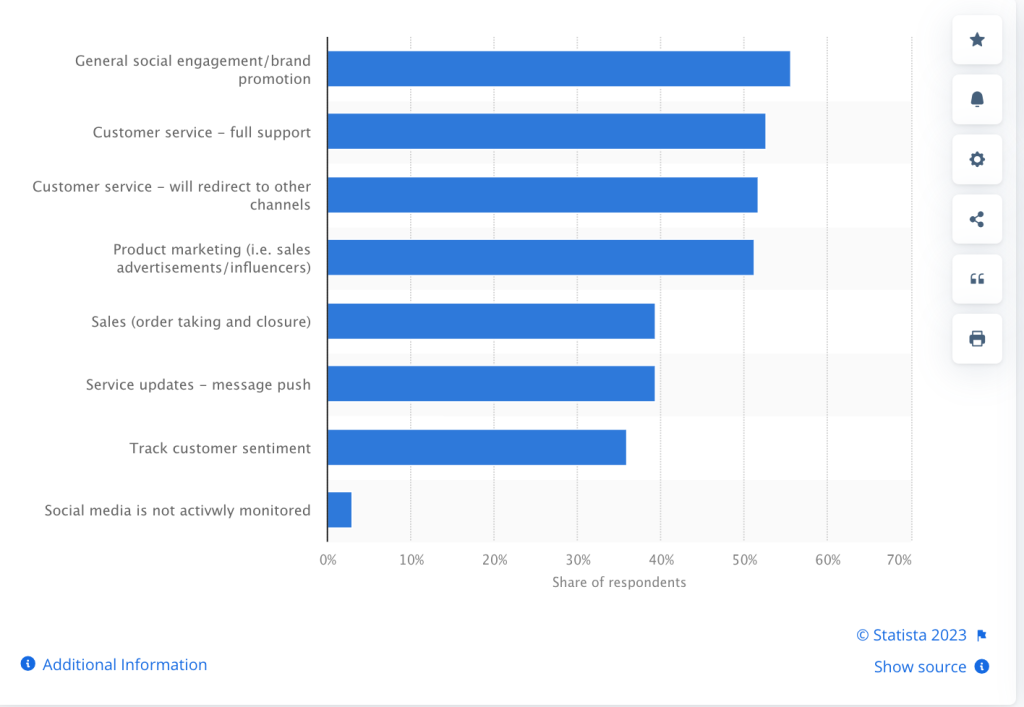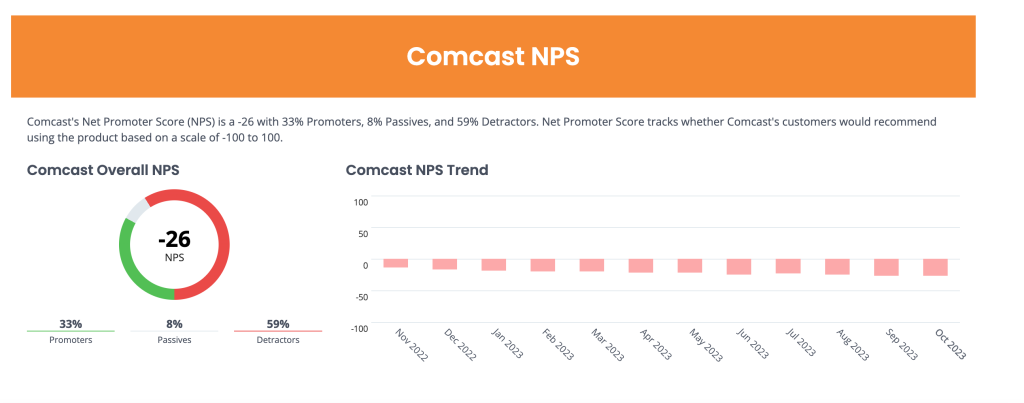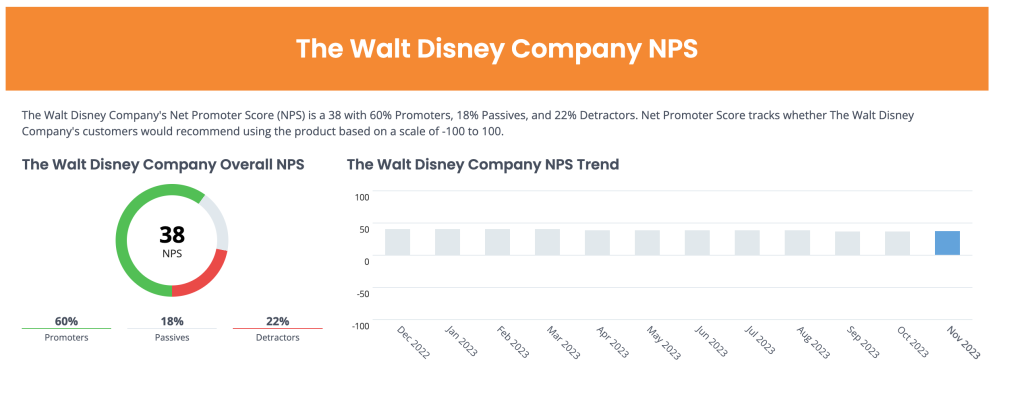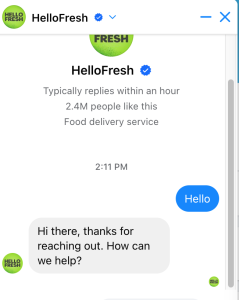Supporting customers on social media has become an integral part of any successful business. With the rise of social media popularity, some weight of customer service shifted from traditional channels to online platforms. Statistics show that roughly 53 percent of respondents used social media for customer service.

Businesses must meet customers where they are, which is in a lot of times on social media. In doing so they will not only accomplish the goal of customer support, but also promote brand awareness and community engagement. And brands with strong online presence reap the benefits of the world of social media.
Consider the example of the following piece of content posted on Facebook by a dance studio and wedding venue owner. This type of post shows engagement by the owner with the studio’s audience. It accomplishes the goal of delivering information with a dash of personal touch. Emotional connection to such content plays a major role in building customer loyalty and community.

In this comprehensive guide, we explore all things social media. We dive into the importance of social media customer support. We discuss how to identify your social media audience and set up your support team. And we discuss the best practices for customer support and for utilizing social media management tools.
Importance of Social Media Customer Support
Social media platforms have become increasingly popular for customer service due to their widespread adoption and the ability to reach a large audience. These customer support channels provide customers with a convenient and direct way to reach out, voice their concerns, and seek assistance.
Social media platforms act as a catalyst for word-of-mouth marketing and online reputation management. By providing exceptional customer support on these platforms, businesses can not only resolve issues promptly but also showcase their commitment to customer satisfaction, building trust and loyalty.

One of the key benefits of social media customer support is the ability to engage with customers in real-time. Unlike traditional customer service channels, such as phone or email, social media allows businesses to respond to customer inquiries and complaints instantly. This immediate response can significantly improve customer satisfaction, as it shows that the business values their feedback and is dedicated to resolving any issues they may have.
Furthermore, social media support provides an opportunity for businesses to showcase their expertise and personalize interactions. By responding to customer queries with detailed and helpful information, businesses can demonstrate their knowledge and establish themselves as industry leaders. This not only helps to build trust with existing customers but also attracts new customers who are seeking reliable and knowledgeable brands.
The Rise of Social Media as a Customer Service Platform
In recent years, social media has evolved into a prominent customer service platform. Customers are now turning to platforms like Facebook, Twitter, and Instagram to seek help or voice their concerns publicly. This shift has forced businesses to adapt and establish a strong social media presence to support their customers effectively. That’s why many business owners opt for tools like Chatfuel or many alternatives that help build a chatbot for Instagram or Facebook.
Businesses that fail to provide adequate social media customer support risk damaging their reputation and losing customers. In today’s digital age, where information spreads rapidly, a single negative interaction on social media can quickly escalate and tarnish a brand’s image. On the other hand, businesses that embrace social media as a customer service platform can benefit from positive word-of-mouth, increased customer loyalty, and improved brand perception.
Customer Satisfaction Scores
Social media interactions play a major role in achieving high Net Promoter Scores, which is an important part of customer experience KPIs and overall customer satisfaction.
NPS measures the loyalty of customers to a company. NPS scores are measured with a single-question survey and reported with a number from the range -100 to +100, a higher score is desirable. NPS® is often held up as the gold standard customer experience metric.” (Qualitrics XM)
Compare these two companies and their NPSs. One is known for its bad customer service. The other has so many happy customers, it created an organization that teaches other companies how to deliver excellent customer service.


It is worth noting that social media platforms offer unique features that enhance the customer support experience. For example, businesses can use direct messaging to have private conversations with customers, allowing for more personalized and confidential support. Companies that use software that allows customers to connect to customer support agents in real-time deliver better customer service.
Social media analytics provide valuable insights into customer behavior and preferences, enabling businesses to tailor their support strategies and improve overall customer satisfaction.

The Impact of Effective Social Media Customer Support
Effective social media customer support can lead to several positive outcomes for businesses. First of all, it allows for real-time problem-solving, ensuring swift issue resolution and high customer satisfaction. Customers appreciate quick responses and solutions, and by providing them through social media, businesses can enhance their reputation for excellent customer service.
Social media support provides an opportunity for businesses to showcase their expertise and personalize interactions, making customers feel valued and appreciated. By going beyond generic responses and offering tailored solutions, businesses can create a positive and memorable customer experience. This personal touch can go a long way in building customer loyalty and advocacy.

By addressing concerns on social media platforms, businesses can mitigate the risk of negative reviews and protect their online reputation. When customers see that a business is actively engaging with feedback and resolving issues, they are more likely to perceive the brand as trustworthy and reliable. This can lead to increased customer retention and positive word-of-mouth, ultimately driving business growth.
Identifying Your Social Media Audience
Before diving into social media customer support, it is crucial to determine your specific target audience on these platforms.
Understanding your social media audience is a fundamental step in developing an effective customer support strategy. By knowing who your audience is, you can tailor your approach to meet their needs and expectations. Let’s explore some key factors to consider when identifying your social media audience.
Knowing Your Customer’s Preferred Platforms
Supporting customers on social media requires knowledge of your audiences. An essential step in identifying your social media audience is understanding which platforms they prefer to use. Conduct market research and analyze your existing customer base to determine the platforms that align with your target audience’s demographics, interests, and preferences.
For example, if your target audience consists primarily of young professionals, platforms like LinkedIn and Twitter may be more relevant. On the other hand, if your audience is predominantly younger individuals, platforms like Instagram and TikTok might be more effective in reaching them.
By focusing on the platforms where your customers are most active, you can optimize your support efforts and deliver a personalized experience. This targeted approach allows you to engage with your audience in a way that resonates with them, increasing the likelihood of building strong customer relationships.
Understanding Customer Behavior on Social Media
Customer behavior on social media can vary significantly from other communication channels. It is essential to understand these nuances to effectively engage with your audience and provide exceptional support.
Customers on social media tend to expect quick responses and prefer short and concise interactions. Unlike traditional customer support channels, such as email or phone calls, social media users are accustomed to instant gratification. They seek immediate answers and resolutions to their queries or issues.
As a business, it is crucial to adapt to these expectations by ensuring prompt and efficient responses. This may involve having a dedicated social media support team or implementing chatbots to handle common inquiries. By meeting your audience’s expectations for quick and concise interactions, you can enhance their overall experience and build a positive brand image.
Related Read: How CPAP.com Improved Their Customer Satisfaction Scores by 15% with Live Chat
Furthermore, paying attention to customer sentiment on social media can provide valuable insights into their needs and pain points. By leveraging sentiment analysis tools, you can identify trends and proactively address potential issues. For example, if you notice a significant increase in negative sentiment related to a particular product feature, you can take immediate action to rectify the situation and communicate your efforts transparently to your audience.
Understanding customer behavior on social media goes beyond just response times and sentiment analysis. It also involves studying their engagement patterns, content preferences, and interactions with your brand. By gaining a comprehensive understanding of your audience’s behavior, you can refine your support strategy and create meaningful connections with your customers.
Setting Up Your Social Media Customer Support Team
Once you have a solid understanding of your target audience on social media, it’s time to assemble a dedicated customer support team to handle inquiries and engage with customers.
Creating a successful social media customer support team involves careful planning and consideration. It’s not just about having a group of individuals who can respond to customer inquiries; it’s about building a team that can effectively represent your brand, provide excellent service, and foster positive relationships with your customers.
When setting up your social media customer support team, it’s important to divide your team into roles that align with the different aspects of social media customer support. This will help ensure that each team member has clear responsibilities, creating a well-organized and efficient support system.
Roles and Responsibilities within the Team
Divide your team into roles that align with the different aspects of social media customer support. Consider designating team members as social media managers, support specialists, and community managers. Each role should have clear responsibilities, ensuring a well-organized and efficient support system.
The social media manager plays a crucial role in overseeing the overall strategy and ensuring consistent branding and messaging across platforms. They are responsible for developing and implementing social media guidelines, monitoring trends, and analyzing data to optimize customer support efforts.
Support specialists are the frontline responders to customer inquiries. They handle customer questions, resolve issues, and provide solutions. These team members should have a deep understanding of your products or services, as well as excellent problem-solving skills to address customer concerns effectively.
Community managers focus on building and maintaining positive relationships with customers through engagement, moderation, and content creation. They are responsible for fostering a sense of community, responding to customer feedback, and creating engaging content that resonates with your target audience.
Essential Skills for a Social Media Customer Support Team
Building an effective social media customer support team requires individuals with specific skill sets. Strong written communication skills are crucial as most interactions will be text-based. Team members should be able to convey information clearly, concisely, and in a friendly tone.
Additionally, team members should possess empathy, patience, and the ability to handle difficult situations with grace. Dealing with customer complaints or negative feedback can be challenging, and it’s important for your team to respond in a professional and empathetic manner.
Knowledge of social media platforms is also essential. Your team should be familiar with the different social media channels your brand utilizes, as well as the features and functionalities of each platform. This knowledge will enable them to navigate the platforms effectively and provide timely and accurate support.
Problem-solving abilities are another valuable trait to look for in potential team members. They should be able to analyze customer issues, identify the root cause, and provide appropriate solutions. This requires critical thinking skills and the ability to think creatively to resolve complex problems.
An aptitude for multitasking is also important in a social media customer support team. They will need to handle multiple inquiries simultaneously, prioritize tasks, and manage their time effectively to ensure timely responses to customers.
By assembling a well-rounded team with these essential skills, you can create a social media customer support team that is equipped to handle customer inquiries, provide excellent service, and represent your brand effectively on social media platforms.
Implementing Best Practices for Social Media Customer Support
Now that you have a team in place, it’s important to establish and follow best practices for social media customer support.
Responding to Customer Inquiries and Complaints
Supporting customers on social media mandates speedy service. Timely responses are key in social media customer support. Aim to acknowledge customer inquiries and complaints within minutes or hours, depending on the platform and the severity of the issue. Provide personalized and empathetic responses, addressing each customer by name whenever possible. It’s essential to remain professional and maintain a positive tone, even in challenging situations.
In cases where resolutions cannot be achieved through public platforms, guide customers to private channels like direct messages or email to continue the conversation and ensure privacy.

Proactive Engagement and Customer Interaction
Don’t wait for customers to contact you. Actively monitor relevant social media conversations, use social listening tools to track brand mentions and industry-specific keywords, and engage with potential and existing customers. By being proactive, you can identify opportunities to provide assistance, offer recommendations, and showcase your expertise, ultimately strengthening customer relationships.
Brand Listening and Community Engagement
the cashier at trader joes offered me a spoon so i could eat my cookie butter on the way home. THIS is customer service.
— alexandria (@a1exandria) September 15, 2018
As we mentioned, staying connected with your customers not only offers efficient customer support but also expands brand community reach. Offering your audiences interactive content, elements of gamification, and personal touches strengthens community relationships.
Following certain trends, listening to what customers are saying about your company, and generally staying current and active on social media.
Utilizing Social Media Management Tools
Managing social media customer support efficiently requires the use of specialized tools designed to streamline workflows and enhance productivity.
Features to Look for in a Social Media Management Tool
When selecting a social media management tool, consider features such as social media listening, scheduling and publishing content, monitoring brand mentions and keywords, analytics and reporting, and team collaboration capabilities. The right tool will help you efficiently manage customer inquiries, track performance, and optimize your support efforts.
Integrating Tools into Your Customer Support Strategy
Integrate your chosen social media management tool into your overall customer support strategy. Ensure that your team is well-trained in using the tool’s features and can leverage them to maximize their effectiveness. Regularly analyze performance metrics provided by the tool to identify areas for improvement and refine your support strategy accordingly.
Supporting Customers on Social Media
Supporting customers on social media requires a comprehensive approach. Some key aspects include:
- understanding the importance of social media customer support
- identifying your specific audience and their preferences
- setting up a dedicated support team
- implementing best practices
- utilizing social media management tools




